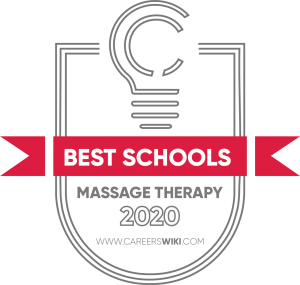…
There are nine massage therapy schools in Kentucky that state authorities have approved.
Students usually earn certificates in less than a year, after completing curricula that include classroom instruction, lab sessions, and real-world experience in clinical settings. A graduate must pass a licensure exam to become a massage therapist in Kentucky.
The future is promising for practitioners in the Bluegrass State, where salaries and hourly wages exceed the national average. There will be 120 annual job openings in the field through 2026, according to federal government projections. To view a list of schools in other states, visit this page.

This independent government agency licenses practitioners and facilities. It also establishes standards for educational program curriculum and instructor qualifications for massage therapy schools.
The board specifies license renewal and continuing education requirements. Alleged violators of the panel’s code of ethics and standards of practice may face investigations and hearings, which sometimes lead to civil or criminal charges.
There are seven board members, whom the governor appoints. Five of them are licensed massage therapists who have practiced at least five of the previous seven years and have been Kentucky residents for one year. One or two of these professionals must own or direct a board-approved massage therapy training program. The other two members are “at large,” with no “direct or indirect interest in the profession.” Board terms are three years.
Prospective practitioners must hold high school diplomas or GEDs. They need to enroll in accredited postsecondary school programs that the state board recognizes. Officials require that programs include clinical experiences under the supervision of licensed professionals.
To earn board approval, a school must have a code assignment with the National Certification Board for Therapeutic Massage and Bodywork (NCBTMB). It is required to provide a program featuring 600 or more clock hours of instruction and training. This is to include:
Upon graduation, the next step is to apply to the state board for licensure.
Students must pass the Massage and Bodywork Licensing Examination (MBLEx), administered by the NCBTMB.
The test consists of 100 multiple-choice questions regarding client assessment, treatment plans, the benefits and physiological effects of techniques, pathology, contraindications, areas of caution, special populations, ethics, laws and regulations, guidelines for professional practice, kinesiology, and anatomy and physiology.
Pearson VUE operates testing centers in Louisville and Lexington.
The state board mandates that practitioners renew their licenses annually. Twenty-four hours of continuing education is required every two years. Courses may include ethics, business practices, science, and techniques related to massage therapy.
We selected the schools below based on the programs that they offer, accreditation, student population, graduation rate and reputation.
View our Ranking Methodology to learn more about how we rank schools.

NA
120
This school, which features a student massage clinic and a yoga studio, offers a 720-hour program. The curriculum includes 612 classroom hours and 108 hours of clinical experience.
Students take 36 or 60 weeks to graduate, depending upon whether they attend day or evening classes. They may complete 240 hours of coursework online. The school requires no general studies or elective classes.
The curriculum covers therapeutic, chair, pregnancy, and clinical massage techniques. Students learn about “holistic wellness in mind/body/spirit,” personal relationship skills, and professional development. The student-to-teacher ratio averages 8:1
NA
124
MCTC, in Richmond, touts its “small class sizes” and “lower tuition costs.” Students are not required to take any general education classes such as English, math, or humanities.
The 900-hour Medical Massage Therapy program lasts 60 weeks. There is just one course per term, with students attending classes two days a week. The curriculum includes 168 hours of instruction in medical terminology, anatomy, and physiology. The rest of the coursework is devoted to massage methods.
Students gain real-world experience administering massage and bodywork to the public at an on-campus clinic.
$25
$51,500
22%
The average practitioner in this state receives an annual salary of nearly $51,500 (or an hourly wage of almost $25), considerably better than the national median of about $41,500 a year (or around $20 per hour).
The top 10 percent of earners make more than $80,400 (or nearly $39) in Kentucky, compared with about $78,300 (or almost $38) nationwide. For those in the bottom 10 percent, the pay is over $29,700 (or nearly $14.50) in the state; and more than $21,300 (or about $10.30) nationally.
There were 930 practicing massage therapists in Kentucky in 2016. The number will increase to 1,130 by 2026, according to predictions by the U.S. Bureau of Labor Statistics. That would be a job-growth rate of 22 percent, less than the projected national median of 26 percent.
Sources: U.S. Bureau of Labor Statistics, CareerOneStop

LIMITED TIME DEAL